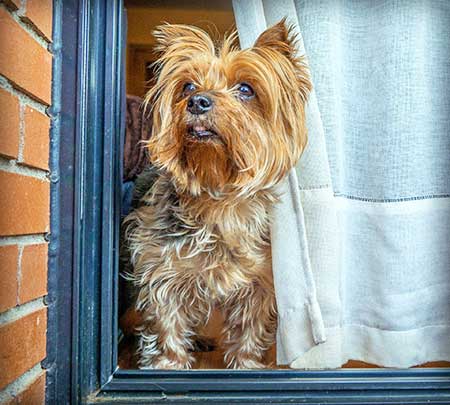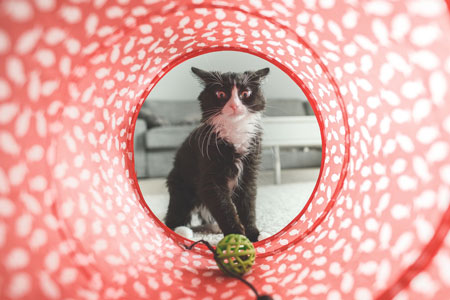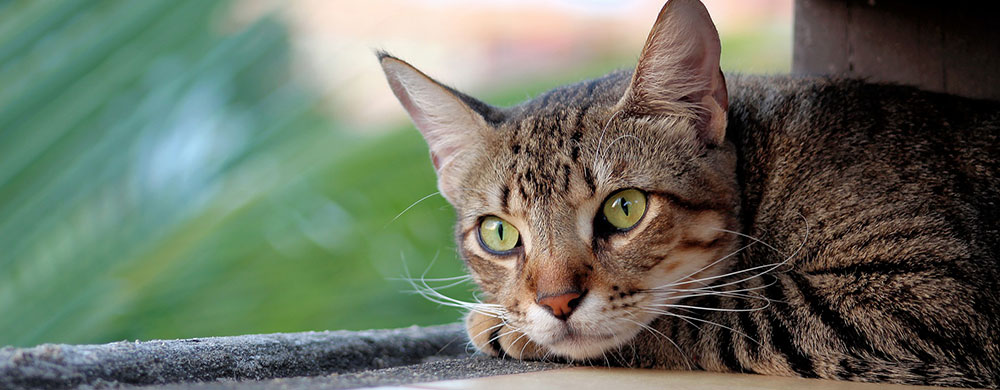Pet's Separation Anxiety
What to do and how to reduce the trauma
Our furry friends can be quite the inquisitive bunch, sticking their cute wet noses into all things not exactly pet-friendly. They usually do this out of just plain curiosity but they can also be symptoms of anxiety and stress - especially when they've been left at alone at home for a while. If symptoms aren't managed effectively it can be quite traumatic for your pet which is why it is suggested to first speak with your vet. Let your vet rule out any medical problems because symptoms of anxiety can mimic effects from infections or hormones and other health related problems as well as medication side-effects so it's important to understand whether any of these are the reason.

The anxious pet may...
- Howl, bark or whine excessively
- Have indoor 'accidents' even though house-trained
- Chew things
- Scratch at windows and doors
- Drool, pant or salivate more than usual
- Pace the rooms obessively
- Try to escape
If the problem is mild:
- Give a special treat each time you leave like an activity toy that will keep him or her occupied. Only give this particular treat when you're away and take it away from them when you've returned.
- Make comings and goings low-key without a lot of greeting on your return. Ignore them for the first few minutes after you get home so their excitement wanes a little.
- Leave some recently worn clothes out that smell like you - but perhaps out of reach of chewing.
- Consider over-the-counter natural calming supplement to reduce their anxiety while you're away.

If the problem seems more serious:
Your pet won't be distracted by even the most fun or tasty toy and treats so you'll need to slowly get them used to you leaving them at home.
As soon as your pet notices signs that you're about to leave such grabbing your keys or putting your shoes on, they may start to get nervous. Perform the normal routine you do before you leave but then don't leave. For example, put your shoes on and grab your keys but then sit down and watch some TV, or pick up your keys and make a cup of tea.
Do this over and over many times a day over a few days. When your pet starts to feel less anxious about you performing these tasks you can slowly start to disappear out of sight but remain around the house area.
First, put your shoes on or pick up your keys and just go to the other side of the house, or out into the backyard. Ask your pet to stay, and close an inside door between you. Reappear after a few seconds. Slowly increase the amount of time you stay away to help your pet get used to you disappearing but make sure they are relaxed before you leave.
Only you will be able to tell whether or not your dog is ready to be left alone for longer periods. Remember though to not rush the process, always act calm when you leave and when you return, and give them a treat when you've built up to 10 seconds or so apart.
Make sure your pet gets exercise every day - exercise is great for reducing stress and helping to manage anxiety. Play training games, fetch, interactive puzzles, work their minds as well as their body. A tired, happy dog will be less stressed when you leave.

14063